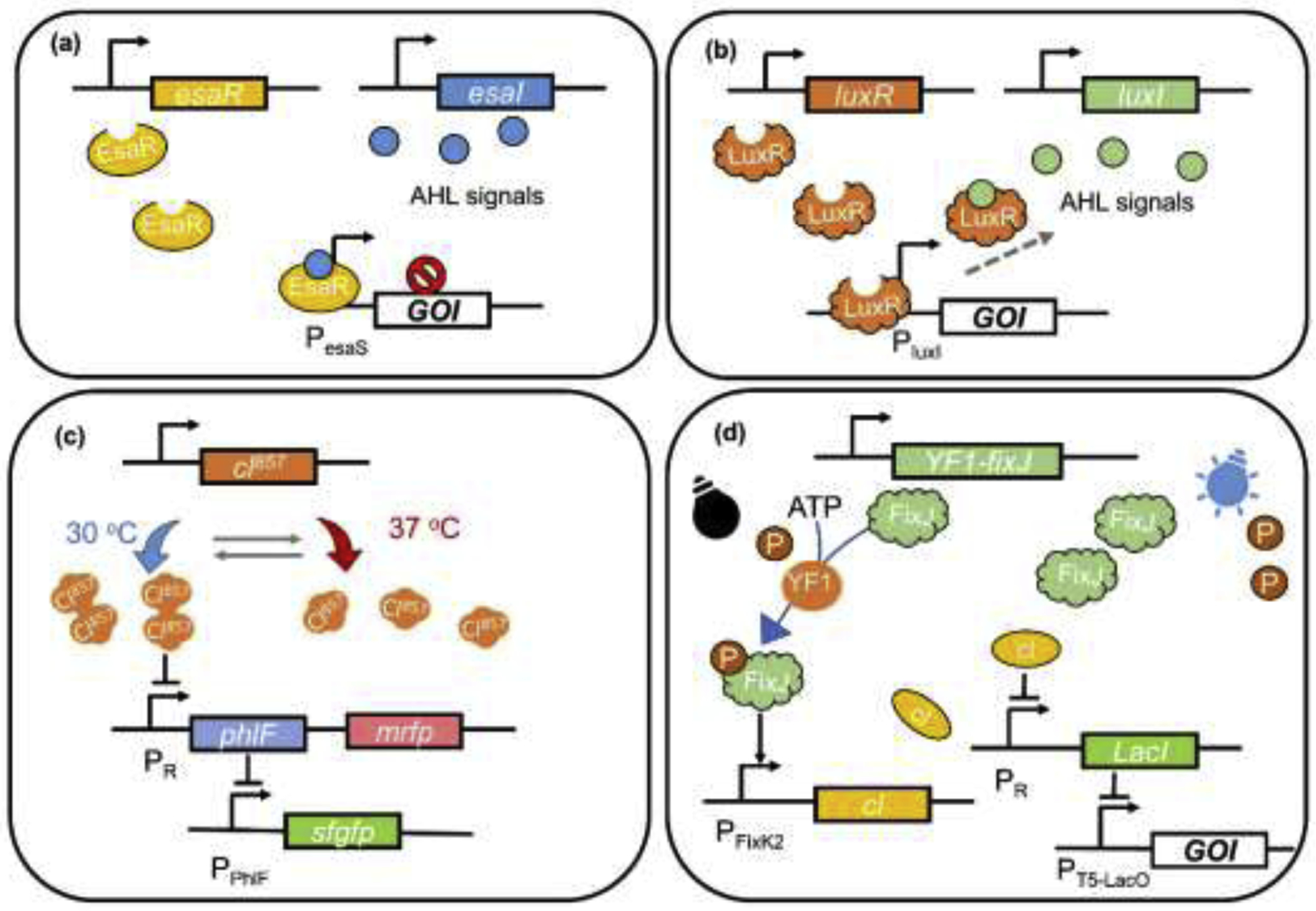Figure 3.

Application of biosensors responsive to environmental changes for dynamic regulation. (a) The diagram of EsaI/EsaR system. The transcription regulator EsaR activates the downstream expression from PesaS. The binding of AHL generated by EsaI releases EsaR to deactivate the transcription from PesaS. (b) The diagram of LuxI/LuxR system. The transcription regulator LuxR activates the transcription from Pluxl when combining with the AHL produced by LuxI. (c) Mechanism of the T-Switch system. Dimers of Cl857 are formed under low temperature (30 °C), which inhibit the transcription of PhlF from PR and maintain the transcription of sfgfp from PPhlF at normal level. When the temperature rises (37 °C), Cl857 dimers decompose to monomers and thus relieve the repression on PhlF and mrfp. Transcription of sfgfp is then blocked since the inhibition of PhlF on PPhlF. (d) Mechanism of the OptoLAC system. Under dark, FixJ phosphorylated by YF1 (a photosensory histidine kinase) activates the expression of Cl, which inhibits the expression of LacI and allowing the expression of GOI form the LacO containing promoter. Bule light induces the dephosphorylation of FixJ, stopping the CI expression and removing the inhibition on LacI. Expressed LacI thus can repress the expression of GOI.
